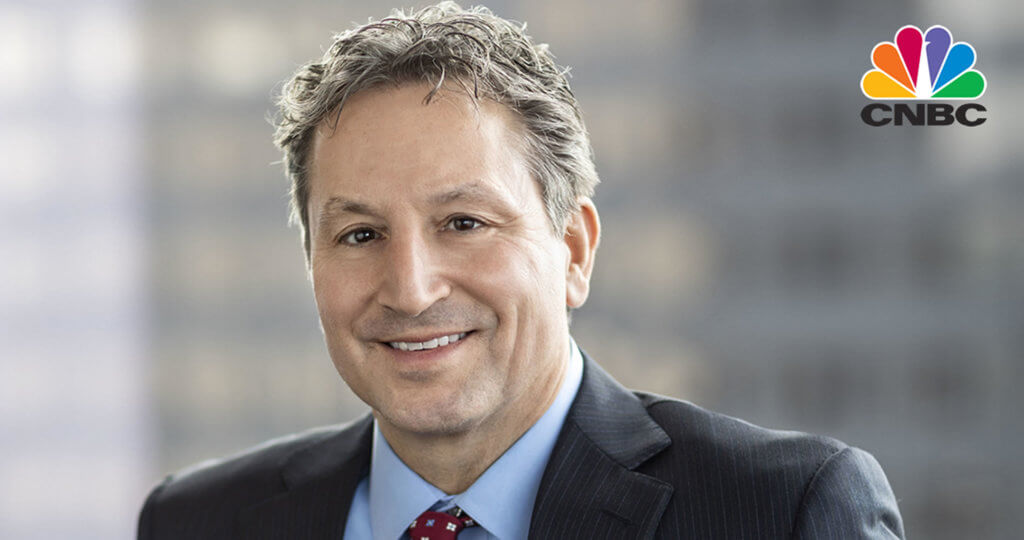
I have a friend who, since he was in middle school, has saved the front page of The Washington Post on days in which newsworthy events occur. Upon learning of this habit, I found it an interesting way to capture a snapshot of the events taking center stage in the public’s mind – a useful counterbalance to the tendency for the passage of time to alter what we believe we had thought (a term coined the misinformation effect in psychology).
As a sports fan and Washington, D.C. native, I have adopted this habit with regard to my hometown teams. In my office hang the front pages from June 8, 2018, and October 31, 2019. They read, “At last, Capitals hoist the Cup” and “At last, Nats are champs.” While an apt articulation of the sweet relief felt by Washingtonians, what is often over-looked in the October 31st edition is an article tucked away in the bottom right-hand corner titled, “Fed trims interest rates amid softening economy.” The first few paragraphs describe an economy at 1.9% annualized GDP growth and a broad market concern for the observed slowdown in business investment. Skimming through The Wall Street Journal historical archives reveals headlines reading, “Warning Signs Point to a Global Slowdown.” (August 14, 2019)1. A closer look at market sentiment indicates investors felt similarly pessimistic – the S&P 500 fell 2.93% that day (one of three >2.5% daily drops that month).2
As a reader five years in the future, I couldn’t help but no-tice the parallels to today. July 2024 unemployment numbers sent fears of a slowing economy and impending re-cession rippling through markets (despite the most recent quarter measuring a healthy 3% annualized GDP growth).3 In response, on August 1, 2024, The Wall Street Journal sported a headline reading “Weak Economic Data Prompts Stock Selloff.”4 By August 5, as markets reacted, we saw, “Is this 1987 All Over Again? What’s Driving the Market Melt-down?”5 The S&P 500 was down 3% on the day.
The availability heuristic is a psychological term used to reference our natural human tendency to overestimate the likelihood of events most easily available to our memory. While surely helpful to our ancestors, and perhaps to our daily lives, it often serves investors quite poorly – reacting to an ever accelerating and continuously proliferating news cycle by extrapolating the most recent information far into the future. Combine that with the concepts from behavior-al economics of risk aversion and herd mentality, and it’s not hard to see why market sell-offs can be abrupt and dramatic (just as market enthusiasm can feverishly swell).
As a client of Harris Associates, you have surely heard us talk about our long-term investment horizon of five to seven years. Should we place ourselves in the shoes of a Wall Street Journal reader five years ago, we stand today in the proverbial “long term.” An investor in August 2019 would have likely been made nervous – and understandably so – by an “impending recession” and an economy growing at 1.9% annualized. Throw in an evolving trade war with China and a hovering U.K. separation from the EU and it’s not hard to recall a time when putting money to work in the equity markets felt far from safe. However, had that investor grit their teeth, set all fears aside, and put money to work in the Oakmark Fund on the precise day they came across the headline “Warning Signs Point to a Global Slowdown” (and saw the S&P 500 down 2.93%), they would have seen their investment rise 117% in five years.6 Tell that same investor that their holding period will include a global pandemic, the first European land war in 75 years, domestic inflation reaching 7%, and a target fed funds rate held at 5.00%-5.25% for more than a year, and their courage to invest would have been nothing short of heroic.
The point of such a review is not so much to imply that one should always invest, blindly trusting that equity markets will rise. In my humble opinion, such an explanation is nothing short of lazy. A more diligent insight might be that business values (particularly those of high-quality businesses) are durable and robust – far less volatile than our fears (or optimism) would allow us to believe. Why? Because the cash flows generated by high-quality businesses are largely stable, tending to be gradational in nature, reflecting the business’s financial health and profitability (among other fundamentals). Prices, on the other hand, are not. Prices reflect the market’s consensus projections – pessimistic, optimistic, or neutral – of the future and are, therefore, far more likely to wax and wane with the day’s headline. Understanding and acting upon the difference can have dramatic impacts on long-term wealth accumulation (just ask the hypothetical investor from August of 2019).
Acknowledging and understanding these innate behavioral shortcomings is tantamount to the Harris investing process. We do not feel that we are any more capable than the next investor at predicting short-term market movements or profitably trading around the news cycle. We do feel, how-ever, that we are competitively advantaged in two ways that allow us to generate strong, long-term absolute returns on behalf of our clients:
- Calculating the intrinsic value of a business.
- Staying disciplined to an investment philosophy that has remained unchanged since the inception of the firm.
Number one is invariably applicable and due to the inherent talent, intellect, and diligence of my numerous col-leagues. Fortunately for long-term oriented investors, it is the intrinsic business value that ultimately drives returns as prices converge with fundamentals. Number two is similarly invariable, but particularly paramount in quarters such as this when the news cycle pulls on our every bias.
There is a litany of events in the world that could cause the current investor concern: conflicts on two continents, cli-mate disasters, and a contentious political election cycle, to name a few. They are all sure to draw their fair share of attention. On the other side of the scale lie more positive indicators: downward trending inflation, rising forward earnings estimates, healthy economic growth, and a Federal Reserve that is embarking on an interest rate cutting cycle. In short, there are plenty of sources for dramatic headlines, each of which will supply a varying degree and directionality of price volatility.
It remains our job, at Harris Associates, to see through these impending headlines (aye, not ignore), understand the impact to cash flows, and evaluate the resulting discrepancy between price and value. Doing so allows us to take ad-vantage of moments in which the availability heuristic, misinformation effect, risk aversion, or herd mentality gets the better of market participants, regardless of directionality. To be clear, to the extent that we learn of information that does impact the valuation of our investments, it is incumbent upon us to appropriately reflect the relative change in valuation within the portfolio.
Around the Harris offices we like to jest that our crystal ball gets blurry after about two years. The future is simply far too uncertain for us to proffer a guess in which we are confident enough to invest behind. As such, we wouldn’t be so foolish as to predict what future headlines hold. What we can predict is that amidst those future events (whatever they may be), we will remain disciplined in employing the same investment philosophy that has served our clients well over decades of various headlines.
As always, we thank you for entrusting us with your investment assets and your continued support. Lastly, the best compliment we can receive is a referral from a satisfied client. We appreciate your referrals and handle them with the utmost care.
1 Mitchell, J and Hilsenrath, J. 2019, August. https://www.wsj.com/articles/warning-signs-point-to-a-global-slowdown-11565814494. www.wsj.com.
2 FactSet data as of 9/30/2024
3 Bureau of Economic Analysis (https://www.bea.gov/data/gdp/gross-domestic-prod-uct#:~:text=Real%20gross%20domestic%20product%20(GDP,increased%201.6%20percent%20(revised)) as of 9/26/2024
4 Dezember, R. 2024, August. https://www.wsj.com/finance/stocks/global-stocks-markets-dow-news-08-01-2024-a5d2b96d. www.wsj.com.
5 Mackintosh, J. 2024, August. https://www.wsj.com/finance/stocks/is-this-1987-all-over-again-whats-driving-the-market-meltdown-4d107126. www.wsj.com.
6 Source: FactSet and Harris Associates. S&P 500 Index depicts performance change from previous day as of August 14, 2019. Oakmark Fund 5-year period represents cumulative performance between September 30, 2019 – September 30, 2024. Past performance is no guarantee of future results. Current perfor-mance may be lower or higher than the performance data quot-ed. All returns reflect the reinvestment of dividends and capital gains and the deduction of transaction costs.
As of 09/30/2024, The Oakmark Fund’s (Investor Class) average annual returns for QTD, 1-year, 3-years, 5-years, 10-years and since inception (8/5/91) were 7.38%, 28.39%, 10.63%, 16.81%, 11.94% and 12.86%, respectively.
The expense ratio for The Oakmark Fund (Investor Class) is 0.91%. Expense ratios are from the Fund’s most recent prospectus dated January 28, 2024, as amended and restated July 1, 2024; actual expenses may vary.
To obtain most recent month-end performance data, visit oakmark.com.
Past performance is no guarantee of future results. Current performance may be lower or higher than the performance data quoted. The investment return and principal value vary so that an investor’s shares when redeemed may be worth more or less than the original cost.
The specific securities identified and described in this report do not represent all the securities purchased, sold, or recommended to advisory clients. There is no assurance that any securities discussed herein will remain in an account’s portfolio at the time one receives this report or that securities sold have not been repurchased. It should not be assumed that any of the securities, transactions, or holdings discussed herein were or will prove to be profitable.
The information, data, analyses, and opinions presented herein (including current investment themes, the portfolio managers’ research and investment process, and portfolio characteristics) are for informational purposes only and represent the investments and views of the portfolio managers and Harris Associates L.P. as of the date written and are subject to change without notice. This content is not a recommendation of or an offer to buy or sell a security and is not warranted to be correct, complete or accurate. Certain comments herein are based on current expectations and are considered “forward-looking statements”. These forward looking statements reflect assumptions and analyses made by the portfolio managers and Harris Associates L.P. based on their experience and perception of historical trends, current conditions, expected future developments, and other factors they believe are relevant. Actual future results are subject to a number of investment and other risks and may prove to be different from expectations. Readers are cautioned not to place undue reliance on the forward-looking statements.
The S&P 500 Total Return Index is a float-adjusted, capitalization-weighted index of 500 U.S. large-capitalization stocks representing all major industries. It is a widely recognized index of broad, U.S. equity market performance. Returns reflect the reinvestment of dividends. This index is unmanaged and investors cannot invest directly in this index.
All information provided is as of 09/30/2024 unless otherwise specified.
Before investing in any Oakmark Fund, you should carefully consider the Fund’s investment objectives, risks, management fees and other expenses. This and other important information is contained in a Fund’s prospectus and summary prospectus. Please read the prospectus and summary prospectus carefully before investing. For more information, please visit oakmark.com or call 1-800-OAKMARK (1-800-625-6275).
The Oakmark Fund’s portfolio tends to be invested in a relatively small number of securities. As a result, the appreciation or depreciation of any one security held by the Fund will have a greater impact on the Fund’s net asset value than it would if the Fund invested in a larger number of securities. Although that strategy has the potential to generate attractive returns over time, it also increases the Fund’s volatility.
The Oakmark Funds are distributed by Harris Associates Securities L.P., member FINRA.
OAKMARK, OAKMARK FUNDS, OAKMARK INTERNATIONAL, and OAKMARK and tree design are trademarks owned or registered by Harris Associates in the U.S. and/or other countries.
Investing in value stocks presents the risk that value stocks may fall out of favor with investors and underperform growth stocks during given periods.
Harris Associates L.P. does not provide tax or legal advice. Please consult with a tax or legal professional prior to making any investment decisions.
©2024 Harris Associates L.P. All rights reserved.







